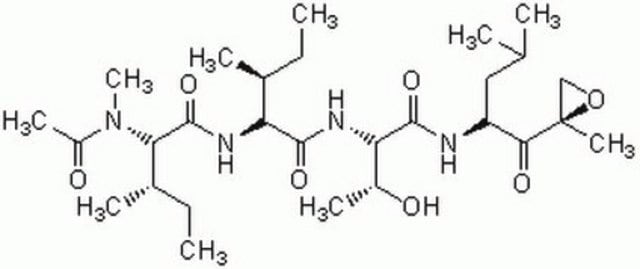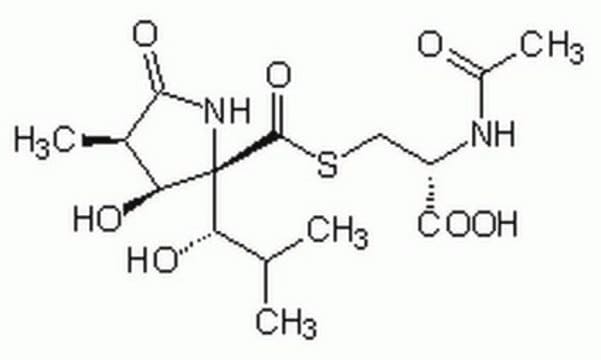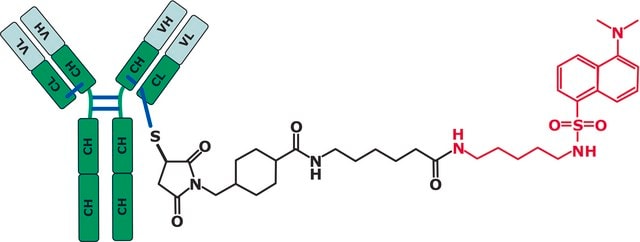324800
Epoxomicin
≥95% (HPLC), solid, proteasome inhibitor, Calbiochem®
Synonym(s):
Epoxomicin, Synthetic, Proteasome Inhibitor XIV
About This Item
Recommended Products
product name
Epoxomicin, Synthetic, Epoxomicin, Synthetic, CAS 134381-21-8, is a potent, specific, and irreversible inhibitor of chymotrypsin-like, trypsin-like, and peptidyl-glutamyl peptide hydrolyzing activities of the proteasome.
Quality Level
Assay
≥95% (HPLC)
form
solid
manufacturer/tradename
Calbiochem®
storage condition
OK to freeze
protect from light
color
white
solubility
DMSO: 1 mg/mL
methanol: 1 mg/mL
shipped in
ambient
storage temp.
−20°C
General description
Biochem/physiol Actions
CT-L,T-L,PGPH activity of proteasome
Packaging
Warning
Reconstitution
Other Notes
Sin, N., et al. 1999. Bioorg. Med. Chem. Lett. 9, 2283.
Hanada, M., et al. 1992. J. Antibiot. 45, 1746.
Legal Information
Storage Class Code
11 - Combustible Solids
WGK
WGK 3
Certificates of Analysis (COA)
Search for Certificates of Analysis (COA) by entering the products Lot/Batch Number. Lot and Batch Numbers can be found on a product’s label following the words ‘Lot’ or ‘Batch’.
Already Own This Product?
Find documentation for the products that you have recently purchased in the Document Library.
Customers Also Viewed
Our team of scientists has experience in all areas of research including Life Science, Material Science, Chemical Synthesis, Chromatography, Analytical and many others.
Contact Technical Service








